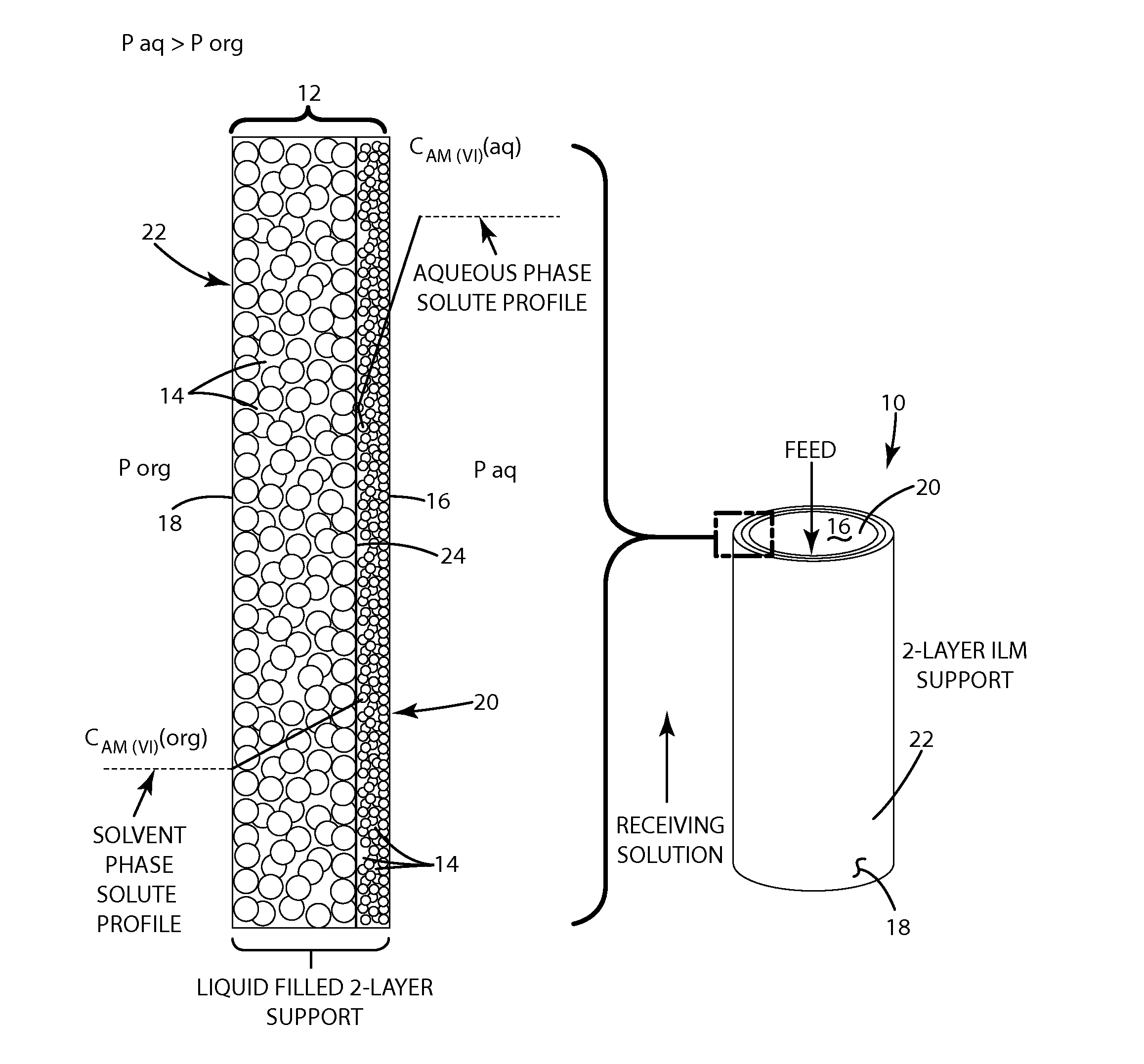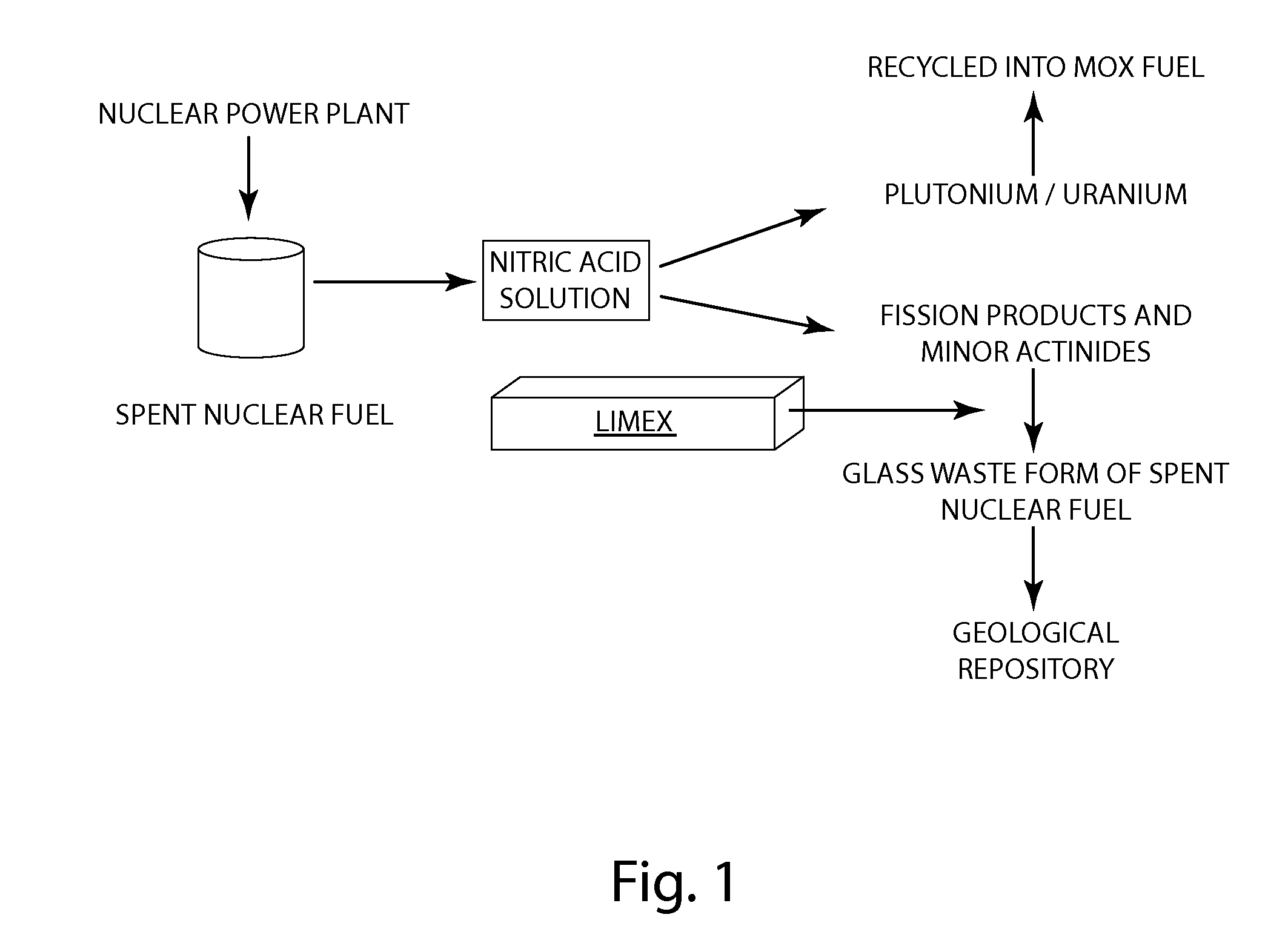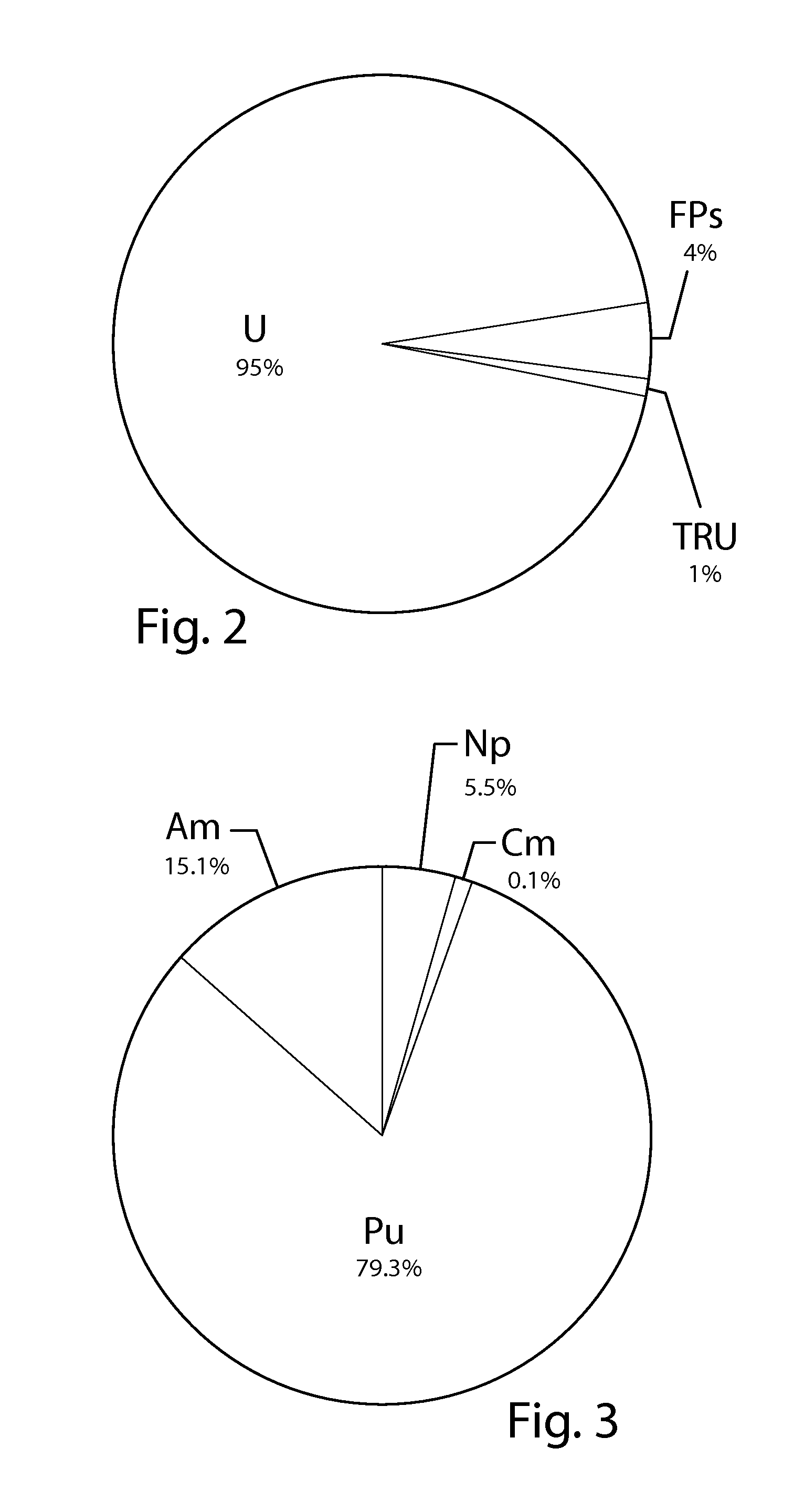Supported liquid inorganic membranes for nuclear waste separation
a technology of liquid inorganic membranes and nuclear waste, which is applied in the direction of separation processes, liquid displacement, nuclear engineering, etc., can solve the problems of high radioactive constituents remaining, achieve the effect of reducing the generation of secondary toxic was
- Summary
- Abstract
- Description
- Claims
- Application Information
AI Technical Summary
Benefits of technology
Problems solved by technology
Method used
Image
Examples
Embodiment Construction
[0022]The invention as contemplated and disclosed herein includes systems and methods for the extraction of americium from spent nuclear fuel using an immobilized liquid membrane. As set forth below, the immobilized liquid membrane of the present invention can substantially remove americium from spent nuclear fuel to potentially increase the storage capacity of radioactive waste repositories while also providing a source of americium for nuclear fuel, nuclear fuel components and other applications.
[0023]FIG. 1 illustrates the sequencing of americium extraction in accordance with the present invention. Spent nuclear fuel initially includes a mixture of high atomic weight elements, e.g., uranium and transuranic elements, and small atomic weight elements, e.g., fission products. For example, the composition of spent nuclear fuel after a fuel utilization of 40 GWd / MT can be 95% uranium as shown in FIG. 2, with the remaining 5% being transuranic elements and fission products. The dissolu...
PUM
| Property | Measurement | Unit |
|---|---|---|
| pore size | aaaaa | aaaaa |
| pore size | aaaaa | aaaaa |
| pore size | aaaaa | aaaaa |
Abstract
Description
Claims
Application Information
 Login to View More
Login to View More - R&D
- Intellectual Property
- Life Sciences
- Materials
- Tech Scout
- Unparalleled Data Quality
- Higher Quality Content
- 60% Fewer Hallucinations
Browse by: Latest US Patents, China's latest patents, Technical Efficacy Thesaurus, Application Domain, Technology Topic, Popular Technical Reports.
© 2025 PatSnap. All rights reserved.Legal|Privacy policy|Modern Slavery Act Transparency Statement|Sitemap|About US| Contact US: help@patsnap.com



